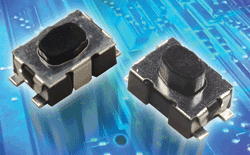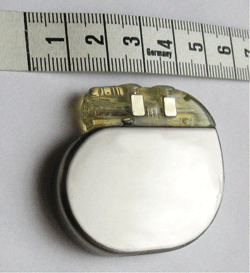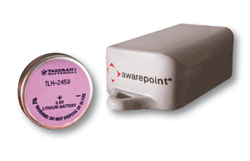Sponsored by Digi-Key
Medical advances drive switch development
Portability, criticality, and reliability are paramount concerns, with an eye toward health and safety regulations. Over the years, the medical industry has evolved to include more self-care and at-home care, as well as highly technical (and often more expensive) equipment. The increased the demand for services outside of hospitals and healthcare offices is resulting in more portable equipment. . .
http://www.nxtbook.com/nxtbooks/hearst/projectmedical_200906/index.php?startid=5

Transdermal patches employ self-regulating tactile switches to trigger the dispensing of medicine.
Component reliability in implantable equipment
There is disagreement about how best to ensure reliability for implantable medical devices. Since the malfunction of implantable medical devices can be fatal to the patient, the components used must be of the highest reliability possible. Moreover, because implantable medical devices must function for lifetimes around 5 years…
http://www.nxtbook.com/nxtbooks/hearst/projectmedical_200906/index.php?startid=9

In addition to reliability screening, the devices must be constructed in a way that removes or minimizes the possibility of long-term failure modes from occurring.
Batteries in medical RFID
Withstanding the heat of autoclaves is a must. The demand for more efficient data capture and seamless information management has spurred a steady growth in wireless radio frequency identification (RFID) real-time location systems (RTLS) well beyond their initial manufacturing and distribution roots. These battery-powered systems are now found in other specialized industries such as the medical industry where cost containment and other dynamics have prompted design engineers into new modes of thought and innovation. . .
http://www.nxtbook.com/nxtbooks/hearst/projectmedical_200906/index.php?startid=14

RFID asset tags for medical applications need to handle power management solutions and harsh environments.
Medical Electronics– Not Science Fiction!
As I walk up to the reception kiosk at my doctor’s office, I’m greeted by an eye-level LCD displaying a welcome message. It prompts me to place my right index finger on the pad below the screen. I do, my fingerprints are recognized, and the screen then informs me that I am on time for my appointment. Minutes later, I am called back to the examination room. I sit down and notice that there is a screen next to me which displays not only my photo, but notes from my last visit and that I am on time for my appointment. After the exam, my doctor pokes at his Blackberry and directs me back to the receptionist kiosk – my next appointment is already logged, and I’ll receive an email reminder when it gets closer to that date.
Wow! Just like on [insert favorite sci-fi series here]! Well, almost. The medical industry isn’t quite at 24th-century technology just yet. But Tricorder-esque technology does exist, and it’s only a matter of time before they are in common rotation.
The medical industry is in an exciting place right now. We have the privilege of experiencing advances in medical technology that have been decades in the making, such as implantable sensors, remote patient monitoring and telesurgery. New research and technologies are constantly emerging, so we are also fortunate enough to be able to get a sneak-peak of what is in store for the industry in the next 20 years and beyond – even if we may have to squint a bit.
Christina D’Airo http://www.nxtbook.com/nxtbooks/hearst/projectmedical_200906/index.php?startid=3
For more information about Project Medical visit www.electronicproducts.com/projectmedical
http://www.nxtbook.com/nxtbooks/hearst/projectmedical_200906
Advertisement
Learn more about Electronic Products Magazine





